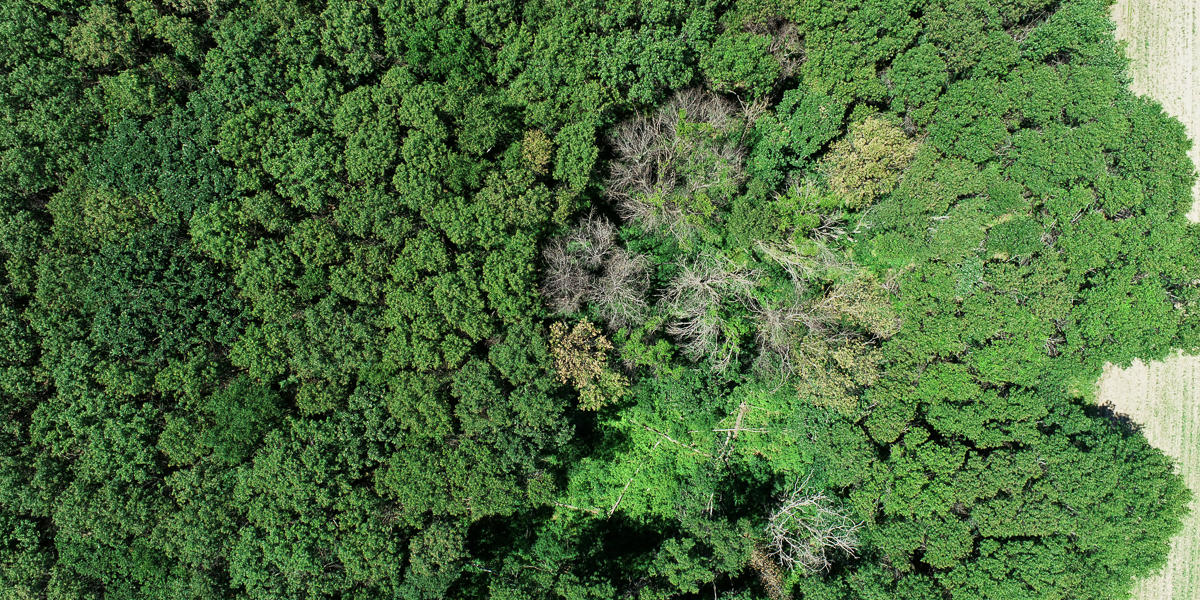
An arial view of a pocket of trees affected by oak wilt in Sherburne county, Minnesota. Image credit: J. Antonio Guzmán Q.
Background
Minnesota is home to a diverse set of tree species that shape its forests, providing ecological and economic benefits. But these forests have been threatened by fungal pathogens that are major causes of tree mortality. Early detection of diseases can guide management to prevent their spread, minimizing tree loss.
Many tree species infected by fungal pathogens show symptoms in their crowns as the disease develops. This is the case for oak wilt (caused by Bretziella fagacearum) and the conifer-killing Heterobasidion Root Disease (HRD), previously known as Annosum root rot (caused by Heterobasidion irregulare). Both diseases lead to physiological changes in leaves and clustered mortality patterns in forests.
Building on previous research that used remote sensing to detect oak wilt in canopies, this research team will model and map the distribution of tree species that host fungal diseases.
Research questions
- How can we couple forest inventories and spaceborne data to model and map the distribution of tree species hosting fungal diseases?
- What are the characteristics of the development of each disease for the purpose of modeling?
- What are the characteristics of canopy-level signatures of healthy and symptomatic trees?
- How can we best map the occurrence of infected trees on a large scale?
Practical implications
Remote sensing-based detection of disease symptoms can provide valuable information for timely implementation of control strategies, including treating or removing infected trees, severing root connections using a vibratory plow, and controlling the spread of the pathogenic fungus through phenologically-timed management efforts. Researchers will apply remote sensing techniques for detecting and mapping trees infected by oak wilt and Heterobasidion Root Disease in Minnesota forests. This will provide a cost-effective and efficient means of early disease detection to help managers slow and prevent pathogen spread.
Outcomes
This project began in January 2024 and is in progress for the next several years. Please check back at a later time for updates.
To stay connected, sign up for the MITPPC newsletter and follow us on Facebook and LinkedIn.